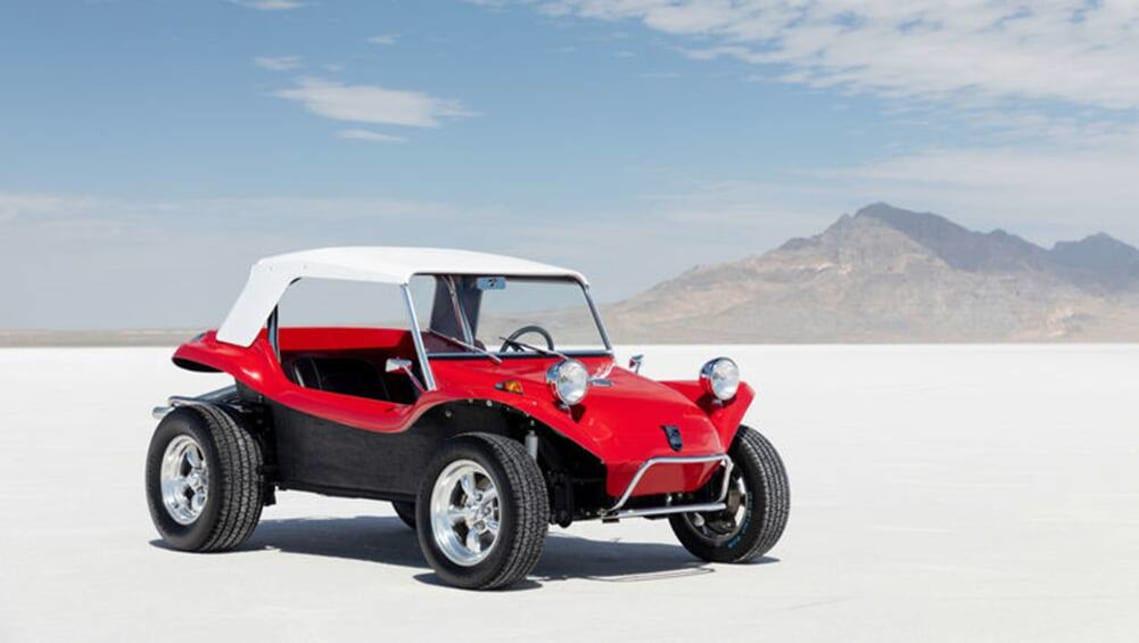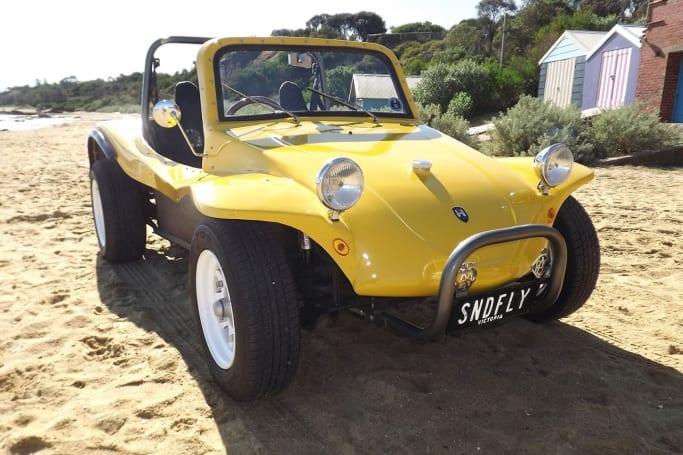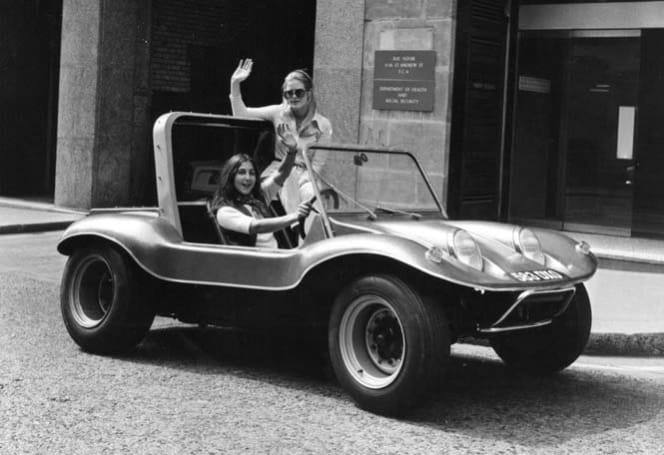
The best beach buggies available in Australia

Bruce Meyers was on his way to the winning formula when he created the first beach buggy in 1964.
"Dune buggy" or, to a greater extent, Australian "beach buggy" is a pretty broad definition these days. In addition to the new wave of single and double seater recreational buggies, there have been many homemade contraptions that were considered beach buggies for many years. Most of them were rough, most of them were funny cars, and they were all dangerous.
But if you really want the cool looks and fun factor of a real beach buggy, then we're talking fiberglass bodywork (of sorts) on an air-cooled Volkswagen chassis.
Not only are these cartoon cars an original interpretation of the idea of an all-terrain, minimalist, hoseless mode of transport, they can also legally drive on the roads of Australia. More or less.
The story begins in the 1960s on the West Coast of the United States, where an inventor, craftsman, and hot rod enthusiast named Bruce Meyers, among other things, built fiberglass boats.
He realized that the world of surf culture needed a cheap, fun, and practical car to get to and from the beach, and with that simple concept, the Meyers Manx dune buggy was invented.
The idea evolved from a one-off chassis made by Meyers to adapt Volkswagen mechanics to a do-it-yourself kit that simply bolted to the entire VW platform to form a fiberglass car with no doors, minimal weather protection, enough performance to be useful and fun. than a state fair. And since then, every VW-based dune buggy or beach buggy has been a riff of Meyers' original concept.
The idea was that you bought a Manx body kit (or whatever brand came up in the competition at the time), found a used Volkswagen Beetle, stripped the old VW body, shortened the underbody so the proportions were right, and then bolted it on. to the Manx kit, which included the tub body, fenders, wheels and tires, and basic mechanicals such as an exhaust system to match the new body.
If you didn't want to shorten the underbody (the hardest engineering part of the transformation), you could also buy a four-seat version that used a full-size VW underbody.
It's only natural that some buggy fans have gone too far with a V8 engine transplant, high-lift suspension, huge wheels and tires, and a number of other modifications that lessen the simplicity and charm of the original concept.
 The dune buggy has a cult following.
The dune buggy has a cult following.
But left as Meyers had envisioned, the dune buggy is light, fast, nimble, capable of moving across the sand and a real pleasure to drive anywhere. As long as it doesn't snow.
In Australia, the craze has become quite widespread, and the concept still has its fans. In the heyday of it all (1970s), a number of Australian companies were producing buggy kits.
Some of the names are little known today, but buggy lovers will recognize them. Astrum, Manta, Taipan were just some of the brands competing for business in the Australian buggy market.
Not that it's your first choice for interstate travel, but what really makes a beach buggy practical is that it can be registered and driven on the road.
Well, that's a theory anyway, because being a mixture of Volkswagen parts and aftermarket plastic bodywork, it's never going to be that easy.
 In the 70s, beach buggies were all the rage.
In the 70s, beach buggies were all the rage.
One hurdle you can clear when building a new kit is opting for a four-seat model that uses the full-size VW platform.
By eliminating the need to shorten the chassis, you'll neatly bypass a lot of work and one of the major technical and certification hurdles you're likely to encounter.
Some states don't register a shortened buggy at all, while others require serious engineering approval.
Wherever you go, you need to check the requirements of your state and territory, and the best way to do this is to use the services of a consulting engineer, who will be required to sign the final result before it can be registered. .
Even if you have found an engineer who will listen to your plans, there are still some non-negotiable things that they are likely to insist on.
If you're using a more powerful engine, then the stock Beetle brakes won't fit. Clever constructors also feature some form of rollover protection (a good idea for any open-top car), and modern gadgets like retractable seat belts are a great addition.
 Most if not all dune buggies are based on VW Beetles. (Image credit: Aussieveedubbers)
Most if not all dune buggies are based on VW Beetles. (Image credit: Aussieveedubbers)
The absolute best advice is to find an engineer who believes your vision can be realized and then stick with it and take their advice seriously.
And find that engineer before you pick up your first wrench or spend your first dollar, because not all engineers interpret rules and regulations the same way as the next one.
Even if you find an engineer to give you the green light, be aware that you'll have to jump through a lot of hoops to legally use this thing on the roads, with everything from a laminated windshield to meaningful mudguards. requirements depending on where you live.
In the most stringent cases, you may have to install a lot of pollution control equipment and maybe even design the result to run on unleaded fuel. Everything gets pretty complicated.
That's why the solution for many buggy enthusiasts is to buy a used vehicle that has already been registered (and is on the registering authority's records).
 Named Manta, the fiberglass hull is shaped like a manta ray. (Image credit: ClubVeeDub)
Named Manta, the fiberglass hull is shaped like a manta ray. (Image credit: ClubVeeDub)
Things were much simpler in the 1970s, which meant it was much easier to register and design a vehicle like a beach buggy.
If you can find a used buggy that's still registered, you'll have even less hassle and only need to provide a certificate of roadworthiness in most states and territories.
This is, of course, the reason why used beach buggy prices are so high. But compared to the hassle and expense of starting from scratch, you may find that it's still cheaper.
And if you're building from scratch, start with a kit that includes documents for basic technical approvals that the authorities can check on the way to registration.
Any home mechanic with average skills and basic hand tools should be able to assemble a buggy from a kit and a wrecked VW Beetle.
 Bugle buggy, fiberglass body mounted on a Volkswagen chassis and engine.
Bugle buggy, fiberglass body mounted on a Volkswagen chassis and engine.
There is nothing complex or complex about the details that make up a beach buggy, but as with anything, taking your time and consulting with people in the know is the smart way to take on a project like this.
If you're going the used car route, don't worry too much about the condition of the mechanical parts. Beetle parts are solid, simple and easy to work with, and if you need to upgrade parts or improve any aspect of performance, there's probably no better maintained classic car than the humble VW.
The only mistake many people make is that they assume that just because it is a plastic kit car with modest mechanics, it will be cheap to buy.
The reality is very different, and the interest in classic cars of all kinds has recently pushed prices into uncharted territory.
It is now possible to spend $40,000 or $50,000 on a used registered beach buggy and even more if it is a restored, real Meyers Manx.
 Volkswagen has reportedly engaged third-party company e.Go to create a unique chassis and bodywork for the production ID Buggy.
Volkswagen has reportedly engaged third-party company e.Go to create a unique chassis and bodywork for the production ID Buggy.
There are still suppliers who continue to make fiberglass bodies and accessories, although in Australia the history of the industry is quite scattered as players have come and gone.
Without a doubt, the US is the place to buy buggy parts and accessories, but don't rule out exchanges and online marketplaces.
One of the most important elements of the buggy is the bottom of the VW. They are prone to rust (especially in a car without a roof), so check under the seats and around the battery box for signs of rot, as this could kill the project if you're not ready to do a major overhaul. Since the hull itself is made of fiberglass, it is relatively easy to patch and repair.
Another thing to look out for when buying used dune buggies these days is workmanship.
Because they were designed as a do-it-yourself kit in the barn at home, work standards vary widely and this can have a huge impact on vehicle dynamics and safety.